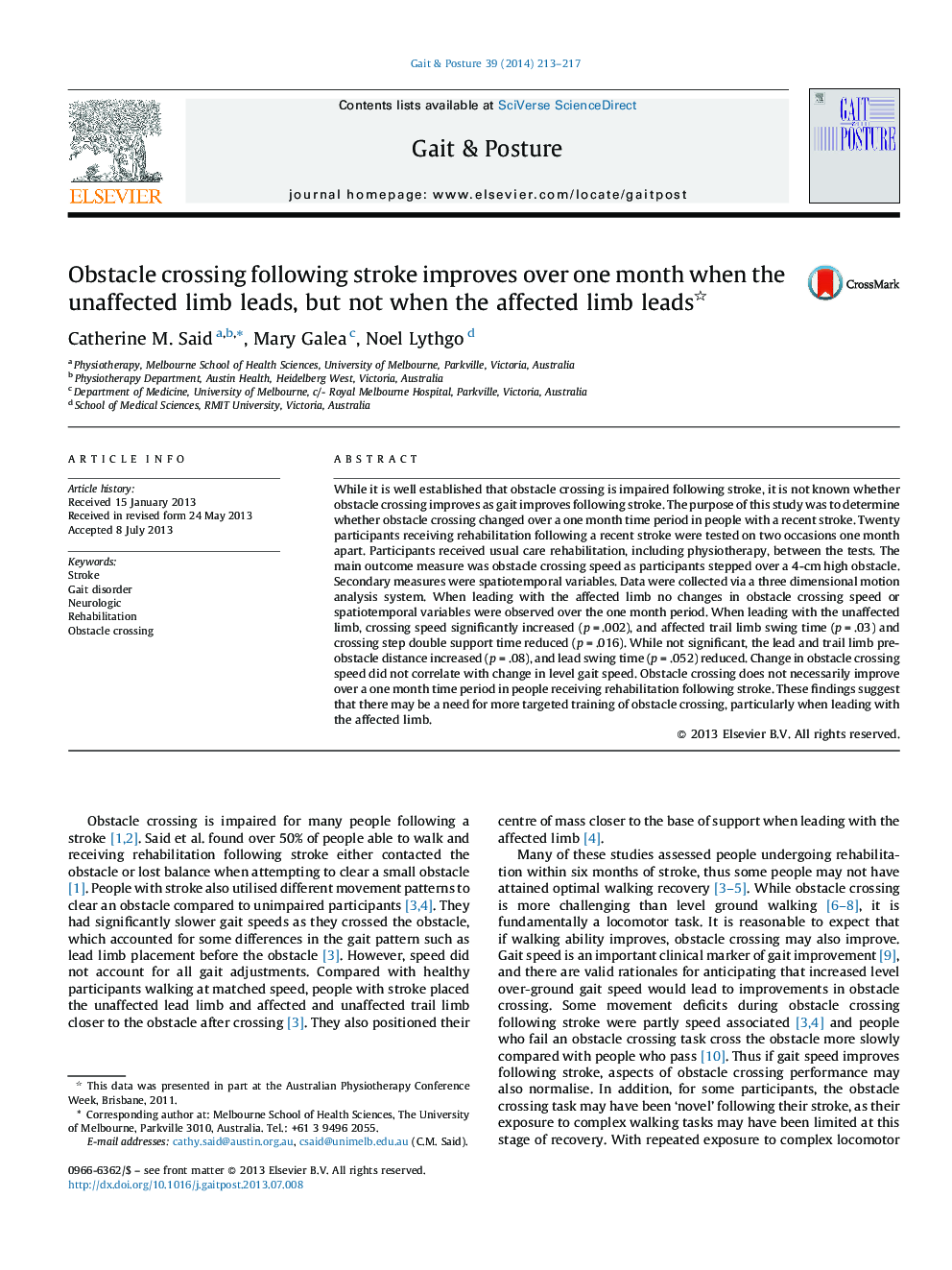| کد مقاله | کد نشریه | سال انتشار | مقاله انگلیسی | نسخه تمام متن |
|---|---|---|---|---|
| 6206968 | 1265653 | 2014 | 5 صفحه PDF | دانلود رایگان |

- It is not known if obstacle crossing following stroke improves over time.
- Obstacle crossing performance was examined over a one month time period.
- Crossing speed increased when the unaffected limb led, but not the affected limb.
- Change in obstacle crossing speed was not associated with change in level over-ground speed.
- Training to improve obstacle crossing following stroke may be required.
While it is well established that obstacle crossing is impaired following stroke, it is not known whether obstacle crossing improves as gait improves following stroke. The purpose of this study was to determine whether obstacle crossing changed over a one month time period in people with a recent stroke. Twenty participants receiving rehabilitation following a recent stroke were tested on two occasions one month apart. Participants received usual care rehabilitation, including physiotherapy, between the tests. The main outcome measure was obstacle crossing speed as participants stepped over a 4-cm high obstacle. Secondary measures were spatiotemporal variables. Data were collected via a three dimensional motion analysis system. When leading with the affected limb no changes in obstacle crossing speed or spatiotemporal variables were observed over the one month period. When leading with the unaffected limb, crossing speed significantly increased (p = .002), and affected trail limb swing time (p = .03) and crossing step double support time reduced (p = .016). While not significant, the lead and trail limb pre-obstacle distance increased (p = .08), and lead swing time (p = .052) reduced. Change in obstacle crossing speed did not correlate with change in level gait speed. Obstacle crossing does not necessarily improve over a one month time period in people receiving rehabilitation following stroke. These findings suggest that there may be a need for more targeted training of obstacle crossing, particularly when leading with the affected limb.
Journal: Gait & Posture - Volume 39, Issue 1, January 2014, Pages 213-217